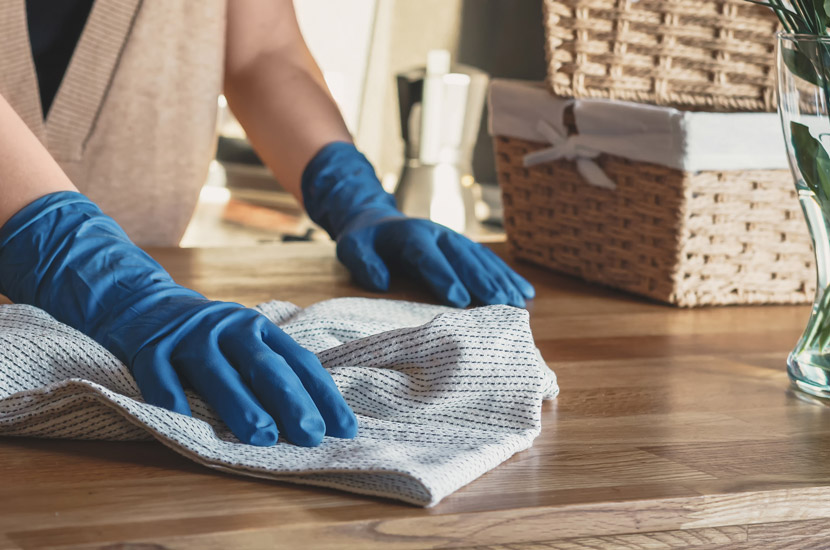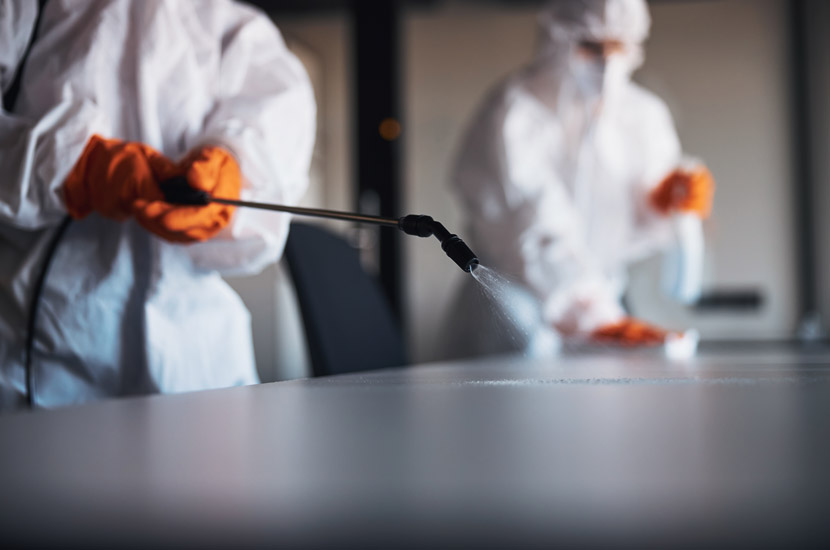It is essential to understand the difference between cleaning, sanitising and disinfecting because if you do not know the difference, you might be using the wrong methods to clean surfaces and protect yourself from harmful microbes.
Many people get confused over the term disinfection because these three words have different meanings. Cleaning is a method for removing dirt and grime from surfaces, while sanitising is making a surface free of harmful microbes by using chemicals or heat, and disinfecting is the elimination of all traces of bacteria, viruses, and other microorganisms.
Complete disinfection makes your office safe for employees and customers. Cleaning, sanitising and disinfecting are essential methods for keeping your workplace clean and reducing the spread of COVID-19.
Also, a workplace that is sufficiently clean is a legal requirement under the Workplace (Health, Safety and Welfare) Regulations 1992, Regulation 9.

Cleaning – removing dirt and grime from surfaces
Cleaning is the removal of dirt and grime from surfaces. The importance of cleaning cannot be overstated. If you do not clean a surface before sanitising or disinfecting, the chemicals or heat used to sanitise or disinfect will only work on the surface, not the dirt and grime.
Cleaning includes everyday routines such as wiping down office countertops, dusting furniture and cleaning bathrooms. However, this basic cleaning cannot eliminate the most harmful microbes that can cause illness, such as COVID. Hence, it is essential to use sanitising and disinfecting methods.
Sanitising – making a surface free of harmful microbes
Sanitising makes a surface free of harmful microbes. There are many different sanitising methods, but the most common methods are chemical sanitisers and heat sanitisers.
Chemical sanitisers are products that you can buy in stores or online. They come in liquid, spray or powder form, and they work by killing the microbes on the surface. In this process, chemicals are not very harsh and can be used regularly, such as vinegar-based cleaners and anti-bacterial sprays available in supermarkets.
Heat sanitisers are devices that use heat to kill the microbes on the surface. They come in many different forms, such as steam cleaners, microwaves and dishwashers. Both chemical and heat sanitisers effectively kill most of the harmful microbes on office surfaces, but they are not 100% effective. So it is essential to constantly follow up sanitising with disinfecting to ensure all the microbes are eliminated.
Disinfecting – the elimination of all traces of bacteria, viruses, and other microorganisms
Disinfecting is the most critical step because it eliminates all traces of bacteria, viruses, and other microorganisms. There are many different disinfecting methods, but the most common method is chemical disinfection.
Chemical disinfection is the process of using chemicals to kill all microbes on a surface. The most common type of chemical used for disinfection is bleach, but many other chemicals can be used.
To effectively disinfect a surface, you need to use the correct chemical concentration and follow the instructions on the label. It is also essential to make sure that the surface is completely dry before using it. Some chemicals can be harmful if they come into contact with skin or eyes. Only professional cleaners should handle these chemicals.

By disinfecting a surface, you can destroy 99.99% of pathogenic germs, bacteria and viruses in minutes. Although there may appear to be little distinction between sanitation and disinfection in terms of outcomes, a few hundredths of a per cent can make a big difference.
Since disinfectants will not work on visibly dirty surfaces, the areas used to prepare raw and ready-to-eat (RTE) foods must be cleaned in two steps. Firstly, a detergent should be used to clean and remove visible dirt, followed by a clean warm water rinse of the object or surface. Then, the object or surface shall be disinfected with a disinfecting agent. All instructions of the disinfectant manufacturer must be complied with.
Conclusion
So, now you know the difference between cleaning, sanitising and disinfecting. It is important to remember that these three methods are essential for keeping your workplace clean and reducing the spread of COVID-19 or other harmful bacteria.
We offer a range of commercial cleaning services perfect for businesses. If you are looking for reliable, professional office cleaners, please get in touch for a free quote.




